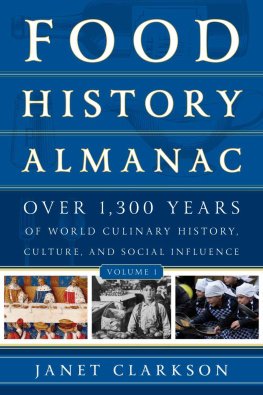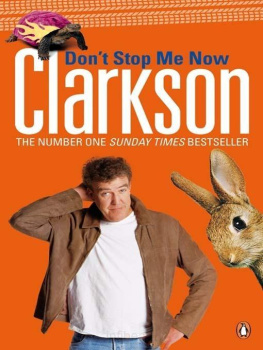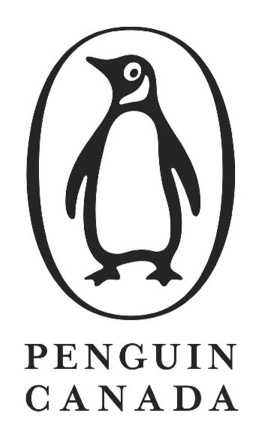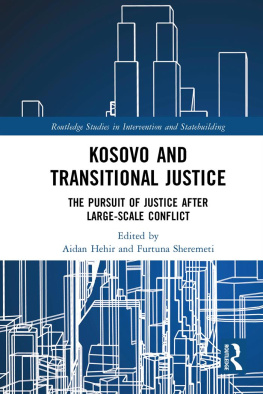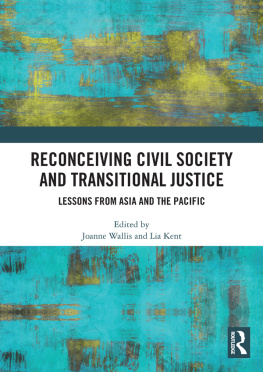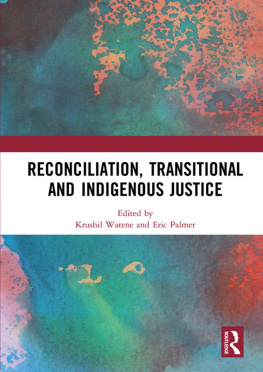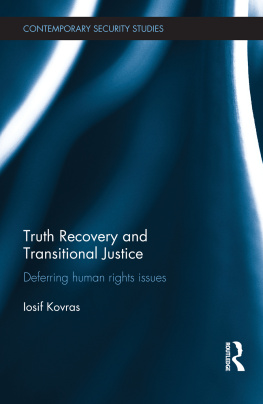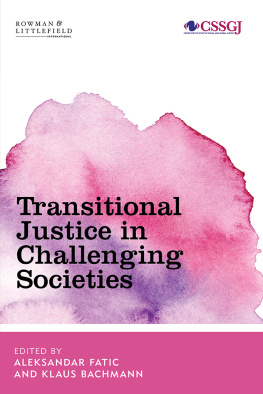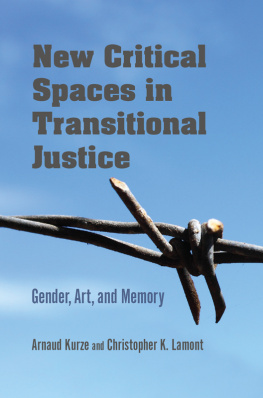Clarkson - Drawing the Line: Toward an Aesthetics of Transitional Justice
Here you can read online Clarkson - Drawing the Line: Toward an Aesthetics of Transitional Justice full text of the book (entire story) in english for free. Download pdf and epub, get meaning, cover and reviews about this ebook. year: 2014, publisher: Fordham University Press, genre: Romance novel. Description of the work, (preface) as well as reviews are available. Best literature library LitArk.com created for fans of good reading and offers a wide selection of genres:
Romance novel
Science fiction
Adventure
Detective
Science
History
Home and family
Prose
Art
Politics
Computer
Non-fiction
Religion
Business
Children
Humor
Choose a favorite category and find really read worthwhile books. Enjoy immersion in the world of imagination, feel the emotions of the characters or learn something new for yourself, make an fascinating discovery.

- Book:Drawing the Line: Toward an Aesthetics of Transitional Justice
- Author:
- Publisher:Fordham University Press
- Genre:
- Year:2014
- Rating:3 / 5
- Favourites:Add to favourites
- Your mark:
- 60
- 1
- 2
- 3
- 4
- 5
Drawing the Line: Toward an Aesthetics of Transitional Justice: summary, description and annotation
We offer to read an annotation, description, summary or preface (depends on what the author of the book "Drawing the Line: Toward an Aesthetics of Transitional Justice" wrote himself). If you haven't found the necessary information about the book — write in the comments, we will try to find it.
Drawing the Line: Toward an Aesthetics of Transitional Justice — read online for free the complete book (whole text) full work
Below is the text of the book, divided by pages. System saving the place of the last page read, allows you to conveniently read the book "Drawing the Line: Toward an Aesthetics of Transitional Justice" online for free, without having to search again every time where you left off. Put a bookmark, and you can go to the page where you finished reading at any time.
Font size:
Interval:
Bookmark:
DRAWING THE LINE
just ideas
transformative ideals of justice in ethical and political thought
series editors
Drucilla Cornell
Roger Berkowitz
DRAWING THE LINE
TOWARD AN AESTHETICS OF TRANSITIONAL JUSTICE
Carrol Clarkson
FORDHAM UNIVERSITY PRESS
NEW YORK
2014
Copyright 2014 Fordham University Press
All rights reserved. No part of this publication may be reproduced, stored in a retrieval system, or transmitted in any form or by any meanselectronic, mechanical, photocopy, recording, or any otherexcept for brief quotations in printed reviews, without the prior permission of the publisher.
Fordham University Press has no responsibility for the persistence or accuracy of URLs for external or third-party Internet websites referred to in this publication and does not guarantee that any content on such websites is, or will remain, accurate or appropriate.
Fordham University Press also publishes its books in a variety of electronic formats. Some content that appears in print may not be available in electronic books.
Library of Congress Cataloging-in-Publication Data
Clarkson, Carrol, 1968
Drawing the line : toward an aesthetics of transitional justice / Carrol Clarkson.
page cm. (Just ideas)
Includes bibliographical references and index.
ISBN 978-0-8232-5415-6 (cloth : alk. paper) ISBN 978-0-8232-5416-3 (pbk. : alk. paper)
1. Justice in literature. 2. Law and aesthetics. 3. Law and ethics. 4. Transitional justiceSouth Africa. 5. Authors, South AfricanAesthetics. I. Title.
PN56.L33C58 2014
809.933554dc23
2013009209
Printed in the United States of America
16 15 14 5 4 3 2 1
First edition
In memory of my father, Robert Cox, who always drew the line,
and my mother, Marguerite, who always encouraged me to draw
Contents
Acknowledgments
My first thanks go to Peter Fitzpatrick and Drucilla Cornell: At Peters generous invitation I presented a paper at a Critical Legal Studies Conference in Johannesburg in 2003. My disciplinary base is in English literature, but in preparing for this conference, new lines of enquiry were suddenly open to me, and I realized that I could participate in different kinds of conversationconversations to cherish for a lifetime. It is thanks to Drucilla Cornells revelatory suggestion that I could see my way clear to integrating a few articles I had written into a larger book project. Drucilla has been a continual source of encouragement and inspiration to me, often at critical moments.
My heartfelt thanks go out to those with whom I have had life-enhancing conversations while writing this book: Emilios Christodoulidis, Scott Veitch, Johan van der Walt, Oren Ben-Dor, Hans Lindahl, Bert van Roermund, Natalie Pollard, Louis Blond, and Willem Boshoff. The artwork on the cover of this book is by Willem Boshoff. Thank you to Franois du Bois and Antje du Bois-Pedain, who invited me to write a chapter for their book Justice and Reconciliation in Post-Apartheid South Africa: This is the essay in which I first started thinking about the concept of drawing the line. Special thanks, too, to Kjetil Enstad, who invited me to present a keynote address at the conference Crossing Boundaries, which was hosted by the School of Advanced Study at the University of London in September 2009. I received invaluable input from Kjetil and other participants at this conference and would especially like to thank Hillis Miller for memorable conversations about drawing lines, about Thomas Hardy, and about the lifelines and deadlines of scholarly writing.
In April 2012 I had the privilege of visiting the University of Stockholm for a month. In the seminar series I presented I had the opportunity to speak about the ideas in this book; I benefited enormously from conversations with colleagues and students who attended the seminars. My special thanks go to Claudia Egerer for her extraordinary hospitality and generous intellectual engagement, to Stefan Helgesson, and to Richard Begam, who was visiting the University of Stockholm at the time.
Alex dAngelo, subject librarian at the University of Cape Town, helped me to track references and sources that I was beginning to think had no material existence in this world. I would also like to thank Daniella Cadiz Bedinimy research assistant at the University of Cape Town and the first person to read the manuscript in its entirety. My sincere thanks go out to the readers at Fordham University Press. Their generous, insightful, and expansive engagement with my work remains a source of inspiration to me.
Stephen, Jacob, and Christopher Clarkson have read and commented on parts of this manuscript in truthful, thought-provoking, imaginative, incisive, and entertaining ways. Im more appreciative of this, and of so much else besides, than I know how to say.
Throughout this book the discussions are based on somewhat different, in some cases shorter, versions of essays that have been published elsewhere. I thank the editors and publishers for permission to draw on this material for the present project:
2005. Embodying You: Levinas and a Question of the Second Person. Journal of Literary Semantics 34: 95105.
2005. Visible and Invisible: What Surfaces in Recent Johannesburg Novels? Moving Worlds 5 (1): 8497.
2007. The Time of Address. In Law and the Politics of Reconciliation, edited by Scott Veitch, 22940. Aldershot: Ashgate.
2007. Who Are We? Dont Make Me Laugh. Law and Critique 18 (3): 36174.
2008. Drawing the Line: Justice and the Art of Reconciliation. In Justice and Reconciliation in Post-Apartheid South Africa, edited by Franois du Bois and Antje du Bois-Pedain, 26788. Cambridge: Cambridge University Press.
2008. Ancient Antagonisms. English Academy Review 25 (2): 10110.
2008. Locating Identity in Phaswane Mpes Welcome to Our Hillbrow. In Connecting Cultures, edited by Emma Bainbridge, 6573. Abingdon: Routledge.
2009. Photo Essay: Welcome to Our Hillbrow. Safundi: The Journal of South African and American Studies 19 (2): 21522.
2010. Fences. In Current Writing: Text and Reception in South Africa. Special issue, Law and South African Literature 22 (2): 83100.
2012. The Obliging Etymology of Nomos: Peter Fitzpatrick and the Aesthetics of Law. In Reading Modern Law: Critical Methodologies and Sovereign Formations, edited by Ruth Buchanan, Stewart Motha, and Sundhya Pahuja, 16577. New York: Routledge.
The work on the cover of this book is by Willem Boshoff, 2003: Neves I, etching on paper, 52 64 cm. My thanks to Willem for granting permission to use this work.
DRAWING THE LINE
Introduction
I
Art, like morality, consists of drawing the line somewhere, G. K. Chesterton wrote in 1928, insisting on the necessityif also the contingencyof marking a limit in the act of making an ethical decision (Chesterton 1928, 780). Yet the act of drawing this line is an art as much as it is a question of morality. A line drawn reconfigures space: It divides yet juxtaposes two entities; it connects two distant points. Figuratively, it includes some and excludes others; it marks a boundary between standing for and standing against, or it traces a path along which places are invested with significance, words are understood, and lives are lived. All of these lines could have been drawn somewhere else.
In this book I am interested in the way in which lines of thought are materialized in the world of sensory perception: in the visual arts, literature, and other forms of cultural production. At the same time, lines of thoughtand in Drawing the Line I am preoccupied with thoughts of transitional justiceseem to be generated by what is depicted, uttered, or written, and (facing the other way now) by what is seen, heard, and read. In the relations that arise between artist and viewer, speaker and listener, writer and reader, this book explores the different ways in which cultural, political, and legal lines are imagined, drawn, crossed, erased, and redrawn in postapartheid South Africa.
Next pageFont size:
Interval:
Bookmark:
Similar books «Drawing the Line: Toward an Aesthetics of Transitional Justice»
Look at similar books to Drawing the Line: Toward an Aesthetics of Transitional Justice. We have selected literature similar in name and meaning in the hope of providing readers with more options to find new, interesting, not yet read works.
Discussion, reviews of the book Drawing the Line: Toward an Aesthetics of Transitional Justice and just readers' own opinions. Leave your comments, write what you think about the work, its meaning or the main characters. Specify what exactly you liked and what you didn't like, and why you think so.



